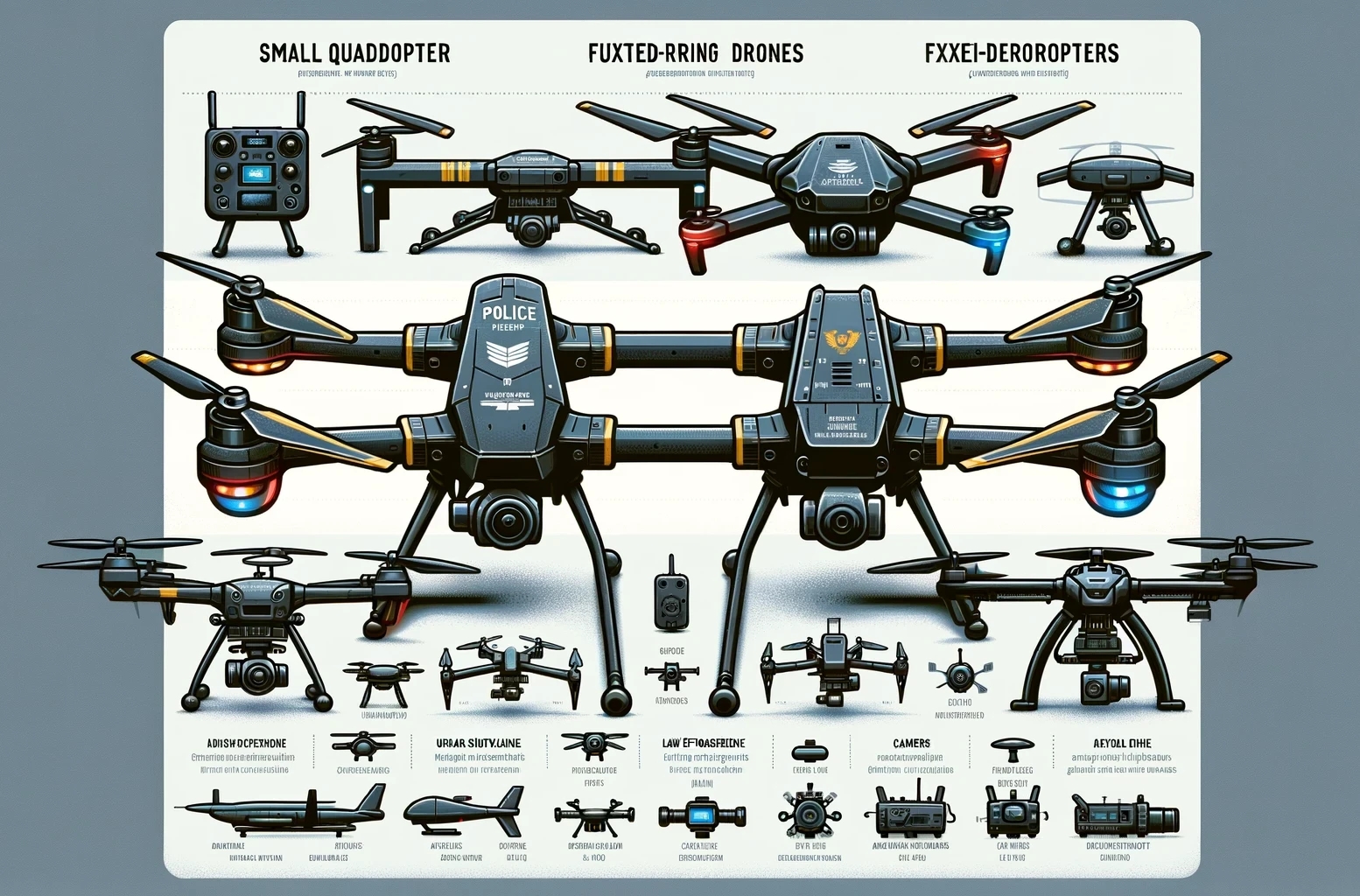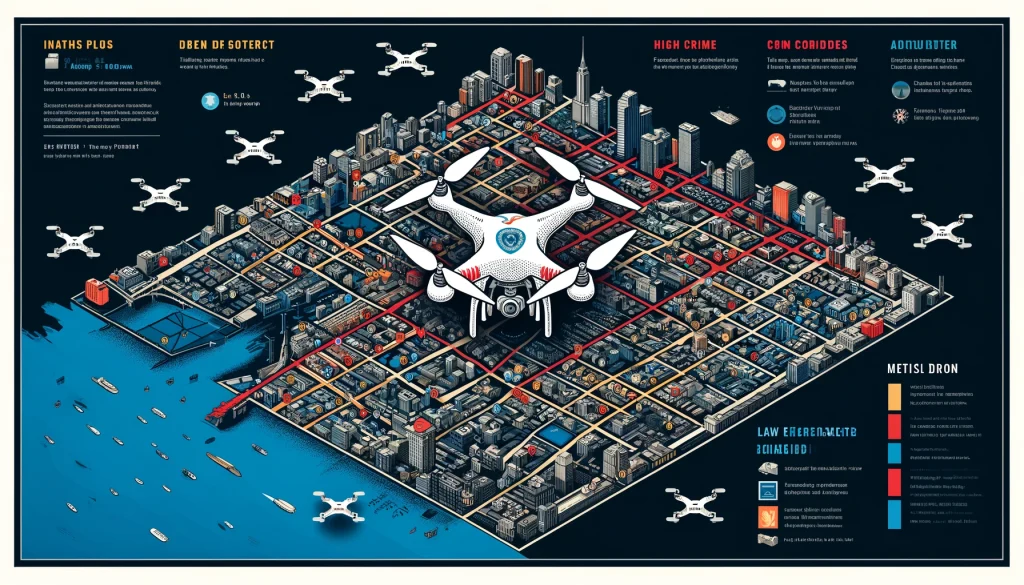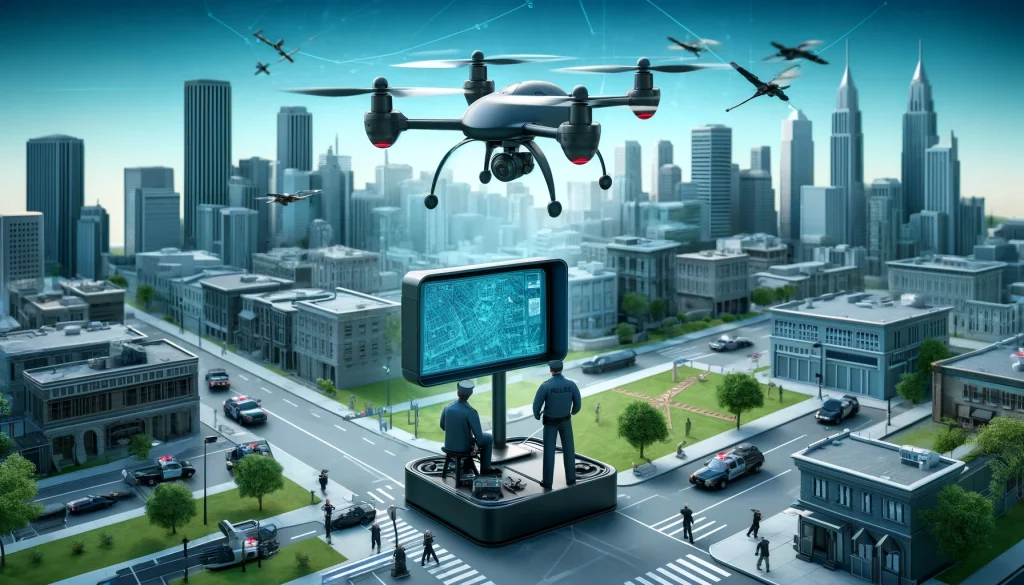
The integration of unmanned aerial vehicles (UAVs), commonly known as drones, into police and law enforcement agencies marks a significant shift in the landscape of public safety and surveillance. Drones offer a unique blend of capabilities, from aerial photography and surveillance to crowd monitoring and disaster response, thereby enhancing the effectiveness of law enforcement operations. However, as the use of drones by police forces becomes more widespread, the emergence of anti-drone technologies has also become a critical component of law enforcement to counteract the potential misuse of UAVs.

Drones provide law enforcement with an eye in the sky, allowing for real-time monitoring of large areas that would be difficult or dangerous to access on foot or by car. They can be deployed quickly in response to emergencies, providing aerial views that are invaluable for tactical planning and decision-making. For instance, during large public gatherings or protests, drones can help monitor crowd movements, detect disturbances, and coordinate law enforcement responses efficiently. Moreover, in search and rescue operations, drones equipped with thermal imaging cameras can locate missing persons in challenging terrains or at night.

However, the proliferation of drone technology also poses new challenges. Drones can be used for illicit activities such as smuggling, espionage, or unauthorized surveillance. This dual-use nature of drone technology has spurred the development and adoption of anti-drone measures by law enforcement agencies. Anti-drone technologies are designed to detect, track, and neutralize potentially hazardous or unauthorized drones that enter restricted or sensitive airspace. These systems range from simple signal jamming techniques that disrupt control frequencies, to more sophisticated methods like net guns that physically capture drones without causing collateral damage.
The legal framework governing the use of drones and anti-drone technologies by police is still evolving. Regulations must balance the benefits of UAVs in law enforcement with concerns about privacy, civil liberties, and public safety. This legal balance is crucial, as the potential for invasion of privacy increases with the capability of drones to conduct persistent surveillance. Law enforcement agencies must ensure that their use of drone technology complies with all applicable laws and respects the rights of individuals. Public transparency and accountability in the deployment of drones are essential to maintain trust between law enforcement and the communities they serve.
In addition to regulatory challenges, the technical aspects of implementing a drone and anti-drone program within a police force involve significant logistical considerations. Officers require training not only to operate drone technology safely and effectively but also to understand the legal and ethical implications of their use. Similarly, anti-drone systems must be operated by personnel who are skilled in recognizing drone threats and deploying countermeasures appropriately.
Looking ahead, the future of drones and anti-drone technology in law enforcement appears poised for further expansion. Advances in technology could see drones becoming more autonomous, with enhanced capabilities for night vision, facial recognition, and even decision-making processes. At the same time, improvements in anti-drone systems will likely focus on more precise detection capabilities, including AI-driven platforms that can more accurately identify and neutralize threats.
The integration of drones into police work reflects a broader trend towards the digitization and technological enhancement of law enforcement practices. While drones offer substantial benefits, their use must be carefully managed and regulated to prevent abuses and ensure that law enforcement agencies continue to uphold the rights and freedoms of the public. As UAV and anti-drone technologies evolve, so too will the strategies of police forces around the world, forever changing the landscape of public safety and surveillance.
Comparison of different types of police drones used by law enforcement, showcasing their specific features and capabilities.
Illustration of the deployment of law enforcement drones across a large urban city, showing different zones and typical drone flight paths.
Images depicting a police drone operation in an urban environment, showcasing the UAV in action for surveillance purposes.